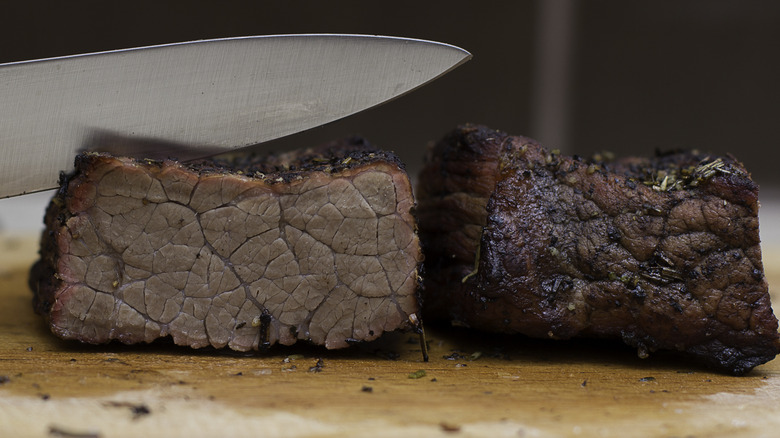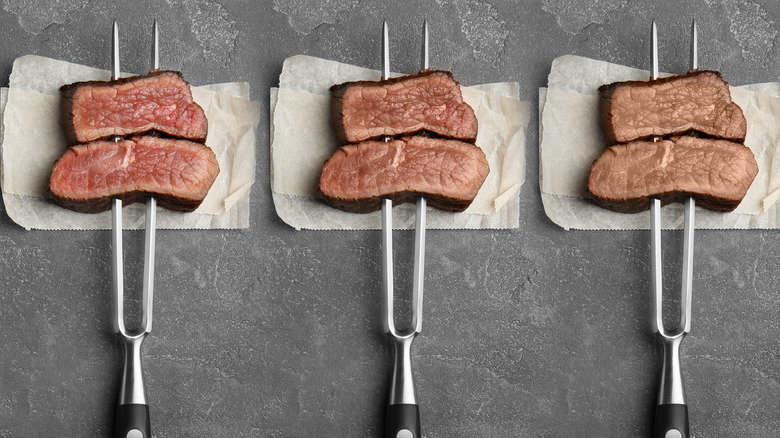Why It's Easy To Overcook Grass-Fed Steak
At its best, a perfectly cooked steak can be savory and succulent, and at its worst, tough and chewy. While the type of filet can impact the flavor and texture of a steak, the way it's cooked is just as important — something that can be particularly challenging in the case of grass-fed steak, but why?
According to the USDA, steak can only be classified as grass-fed if the cattle from which it came grazed exclusively on grasses after weaning. As a result, these factors can directly affect the quality of the meat. For instance, in comparison to beef from cows that were fed a grain-based diet with restricted mobility, grass-fed beef boasts the exact opposite characteristics. Along with its tendency to have a gamey flavor, grass-fed steak is generally much leaner, which is what makes these types of filets so susceptible to overcooking.
Since grass-fed steak has less fat, it lacks the built-in insurance policy of a highly marbled grain-fed steak. Because fat delays the speed at which heat can reach and cook the protein through, it's easier to cook them quickly and evenly without them toughening up. But grass-fed steaks are so lean there isn't enough fat to regulate temperature and slow down the process for a solid sear. Cooking up to 30% faster than conventional cuts, overcooking a grass-fed filet is a very real threat without the proper steak know-how.
What to remember when cooking grass-fed steak
Although fat does wonders for flavor and texture, grass-fed steaks can be just as delicious and juicy as their grain-fed counterparts. That said, rather than opt for tougher cuts like the flank or skirt steaks, go for naturally tender cuts like the tenderloin or ribeye. With a more forgiving grass-fed steak, you can think about how to go about the risky business of cooking.
Temperature and time can make or break a grass-fed steak. To avoid the dry rubberiness that comes with a lengthy cook time, cook filets over a low-than-normal heat to prevent moisture loss and help effectively manage doneness. Additionally, don't keep steaks on the grill any longer than they need to be. Always aim to cook them no more than medium, pulling grass-fed filets from heat once a meat thermometer reaches 135° Fahrenheit, or better yet, 128° Fahrenheit for medium rare. Keep in mind that the steak will continue to cook as it rests.
As a final tip, consider introducing some fat as a sort of safety net. Before steaks hit the grill, coat them in an oil of your choice. For meat seared in a cast-iron pan, braise it with melted duck fat. You can also keep things simple and add a pat of compound butter to the steak after cooking. Just like that, the days of overcooking grass-fed steak will be over — and thank goodness, because these filets can get pricey!

